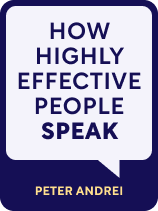

This article is an excerpt from the Shortform book guide to "How Highly Effective People Speak" by Peter Andrei. Shortform has the world's best summaries and analyses of books you should be reading.
Like this article? Sign up for a free trial here.
Why do people have a zero-risk bias? How can it be used to one’s advantage?
Peter D. Andrei explains that effective communication takes psychology into account. When you understand how people’s minds work, you’re more likely to be able to persuade them. He discusses several cognitive biases, including the zero-risk bias, in the context of rhetoric.
Keep reading to learn how to take advantage of the zero-risk bias, even when the risk isn’t zero.
Zero-Risk Bias
Andrei claims that people are irrationally biased toward ideas, products, or circumstances that carry no risk of failure or loss. This is called the zero-risk bias. We’re extremely loss-averse creatures, and we’ll often pay a hefty price to ensure we don’t suffer the pain of losing something, whether it’s our hard-earned money, our precious time, or our health and safety.
(Shortform note: When calculating risk to make decisions, it may be helpful to differentiate between risk and uncertainty. The key difference is that risk is quantifiable (we can reasonably estimate the level of risk) while uncertainty is unknown. Experts point out that people often conflate risk and uncertainty, which can lead to poor decision-making. If you assume that the risk of an occurrence is largely unpredictable, you may fail to take reasonable actions to reduce the chance of it happening. Alternatively, if you try to reduce risk when there isn’t any, you might be wasting time and effort.)
If your proposal, idea, or product is already a risk-free option, you need only emphasize it: State that it’s risk-free, show proof, then reiterate the absence of risk as often as possible. Of course, more likely than not, your idea or product will carry some risk of loss or failure. Here are some of Andrei’s strategies that take advantage of the zero-risk bias even when risk is involved.
Provide Certainty Elsewhere
If the idea you’re proposing has any chance of failure, shift the audience’s attention to a part of it that doesn’t carry any risk. If you’re trying to convince an investor to provide funding to your startup, there’s always a chance that your business will fail and they’ll lose their investment. Nothing you say will remove that risk. Instead, point to a zero-risk aspect of your startup, like the fact that you have a patent for the technology you’re using, so there’s no chance a competitor can copy your product. This will activate the zero-risk bias even if this isn’t a risk the investor had in mind, and even though your plan still carries risk, they’ll be much more inclined to invest in your startup.
(Shortform note: On top of pointing out a zero-risk aspect of your proposal or idea, it may also help to mention the risks as little as possible and instead focus on the benefits. Studies show that when people think about a particular risk more, they’re more afraid of it and are more likely to act on this fear. So even if your proposal carries a very small amount of risk, it may be better to ignore this risk entirely so that the audience doesn’t think about it at all.)
Provide a Loss-Mitigating Guarantee
In the business world, a loss-mitigating guarantee is as simple as offering a full refund for a defective product or underwhelming service. Since you can’t guarantee with 100% certainty that your product or service will deliver value, provide a guarantee that the customer can at least get their money back. Because of zero-risk bias, the extra sales will more than make up for the money you’ll lose by providing refunds.
(Shortform note: Business experts write that, while guarantees are common for products, they’re more powerful for services. This is because they provide perceived value to the customer while also ensuring excellent employee performance. When you offer a guarantee for a service such as plumbing, for example, customers will be willing to spend more because they know their issue will be fixed or they’ll get their money back. Employees will also ensure the job is done properly, as a mistake will cost the company money. Further, employees will be more focused on the customers’ definition of good service, which will also improve performance.)

———End of Preview———
Like what you just read? Read the rest of the world's best book summary and analysis of Peter Andrei's "How Highly Effective People Speak" at Shortform.
Here's what you'll find in our full How Highly Effective People Speak summary:
- That persuasive speech is a complex craft that can be studied and learned
- How to take advantage of cognitive biases to be more persuasive
- Why trying to manipulate others' thoughts isn't inherently immoral






